Review: Fx Bricks 9v track
Posted by Huw,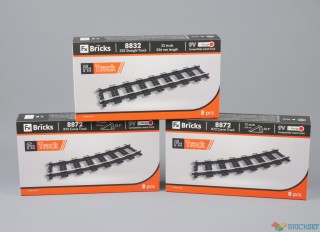
LEGO's current train system is fine for use as a toy at home but inadequate for anyone wanting to create realistic model railways suitable for displaying at public shows. The plastic tracks require the trains to run on batteries which is impractical for prolonged use and the radius of the curves is so tight that running rolling stock with a long wheelbase on them looks ridiculous.
To address both of these issues Canadian company FX Bricks has just launched a range of metal-clad 9v-compatible track, something that the LEGO train community has been waiting patiently for for years.
I've been sent some to evaluate so let's see if it was worth the wait.
It's immediately apparent that this is a quality product. The box is sturdy and the individual track pieces are packed so they are not touching.
Track is sold in boxes of eight pieces and two types are being manufactured at the moment: 32-stud long straight rails and 72-stud radius curves. LEGO's own curved track has a 40-stud radius.
These are the first of many products planned, including turnouts, 8 different radii of curves, various lengths of straights, power connectors and motors. In fact everything needed to run 9v trains that LEGO no longer produces.
The track is easily on a par with that which LEGO used to produce. In fact, I'd go so far as to say it's slightly better because the connectors seem more secure and the track doesn't 'flop' so much when multiple sections are picked up. The metal appears to be the same and it's been attached to the plastic in the same way.
The studs have Fx on them and, conveniently, the radius of the curve is stated on those at the end.
They join perfectly with LEGO track and the colour match is good. I don't have any dark bluish grey 9v rails, only old dark grey, so I've use plastic track for comparison purposes here.
Here's how the R72 compares with LEGO's curves. An R56 will be produced to fit between them.
Placing 10219 Maersk Train on both demonstrates what difference it makes. On LEGO's track it looks a bit daft, occupying almost 180 degrees of the curve.
On the R72s, it looks a lot more realistic.
Steam locomotives in particular benefit from the larger radius: the pony/pilot truck at the front does not protrude so much and the gap between tender and locomotive remains small.
This is a very high quality product that fills a gap in the market, albeit a fairly small and niche one, and if I was still building LEGO train layouts to display I would not hesitate on buying more.
It's available from FX Bricks in North America for $87.95 a box and JB Spielwaren for €59.99 in Europe although initial stocks of the curves have sold out already which I think proves that it is a much needed and in-demand product!
Production has been hampered by Covid-19 but I am assured that more is on its way so keep an eye out on those sites in the coming weeks if you're after some.
Thanks Fx Bricks for sending the track for review. All opinions expressed are my own.
186 likes
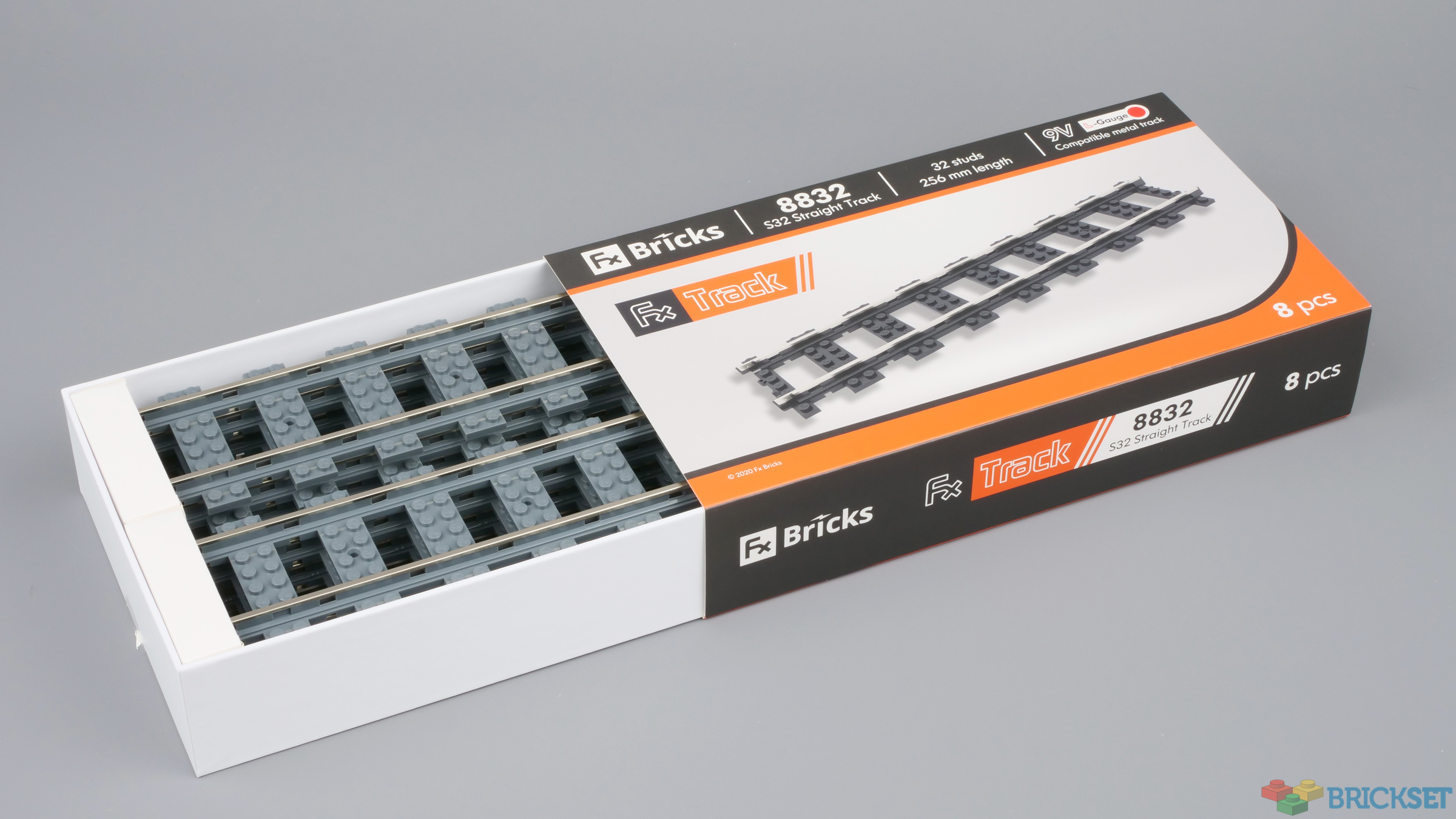
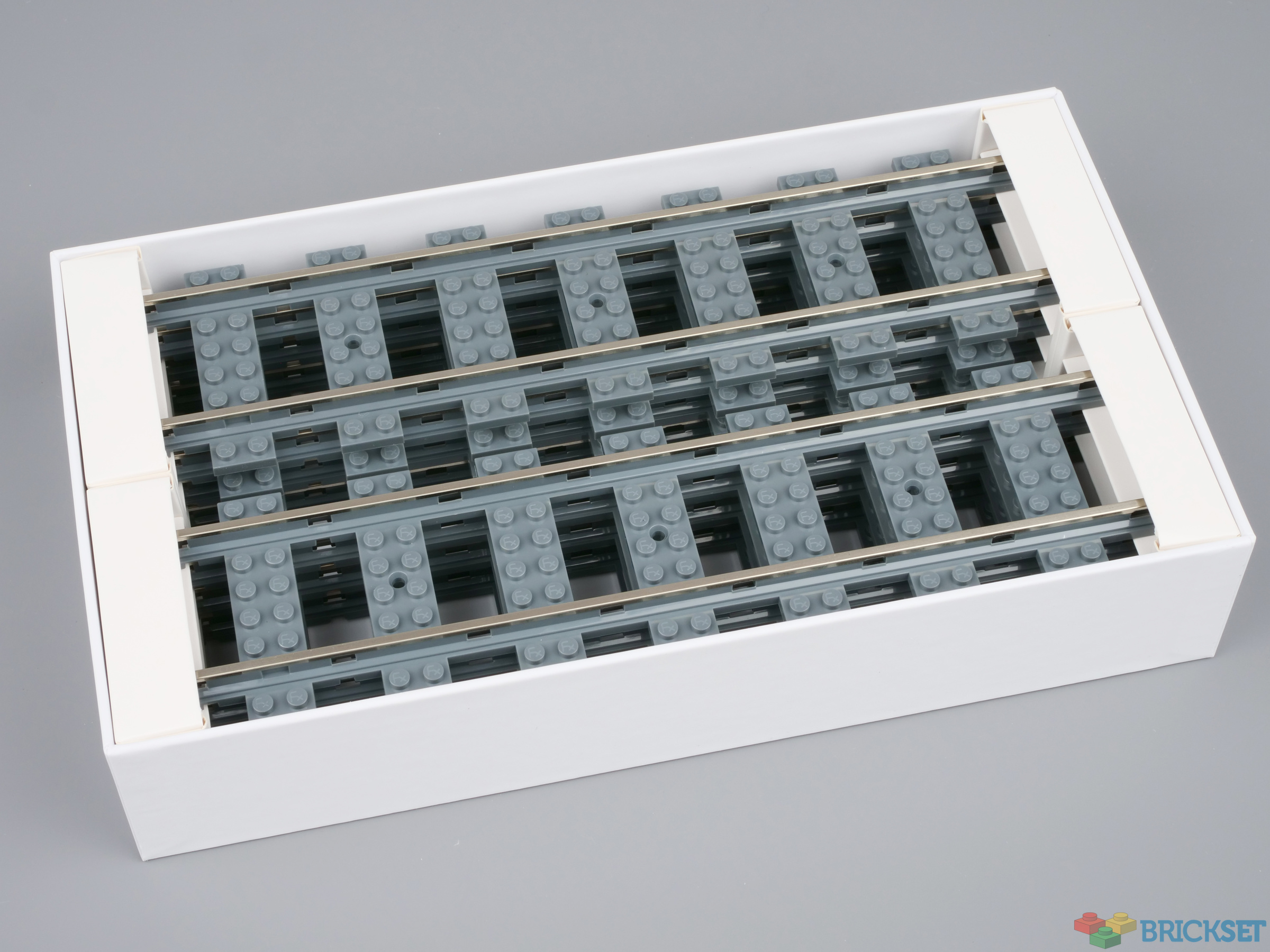
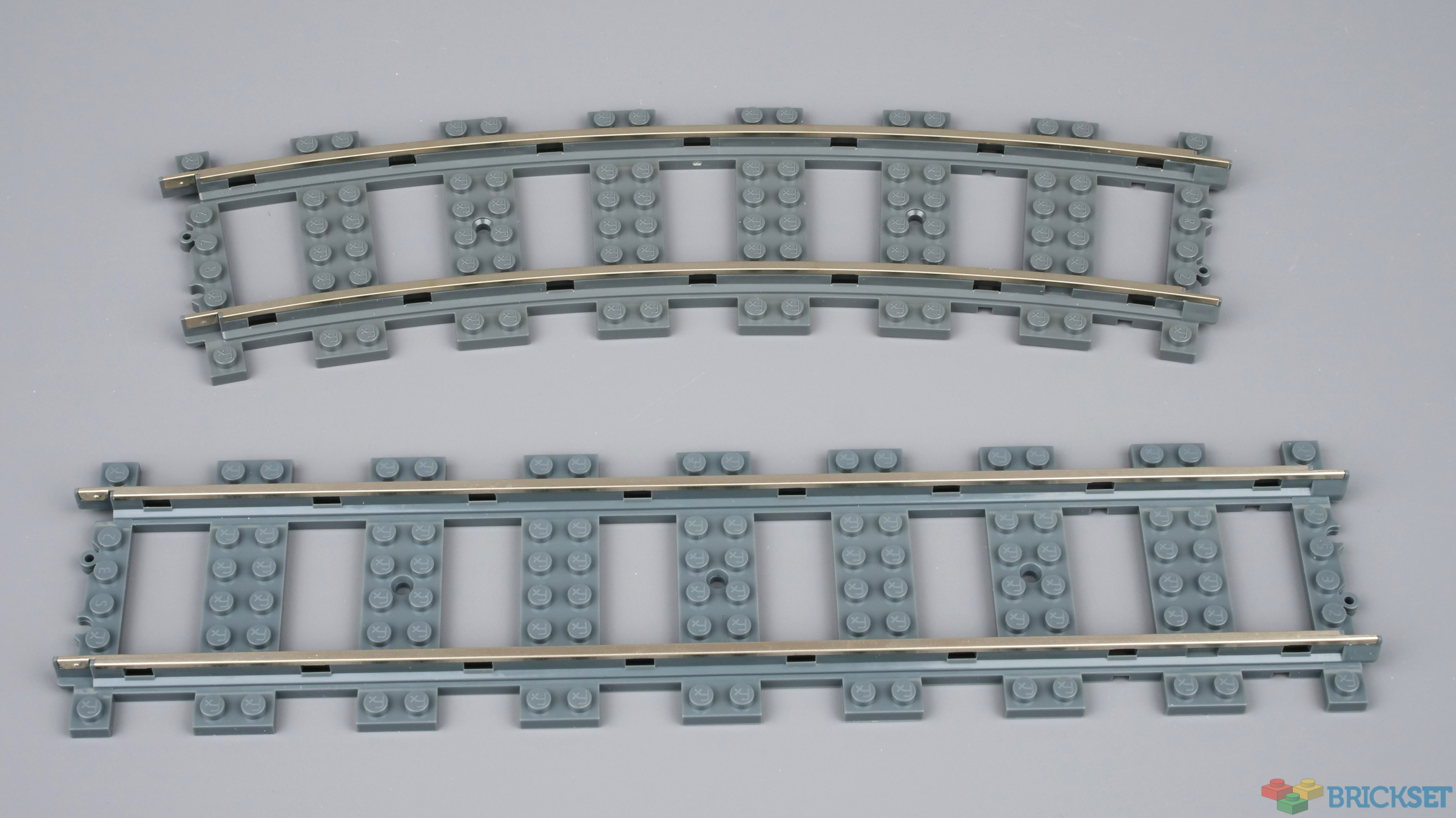
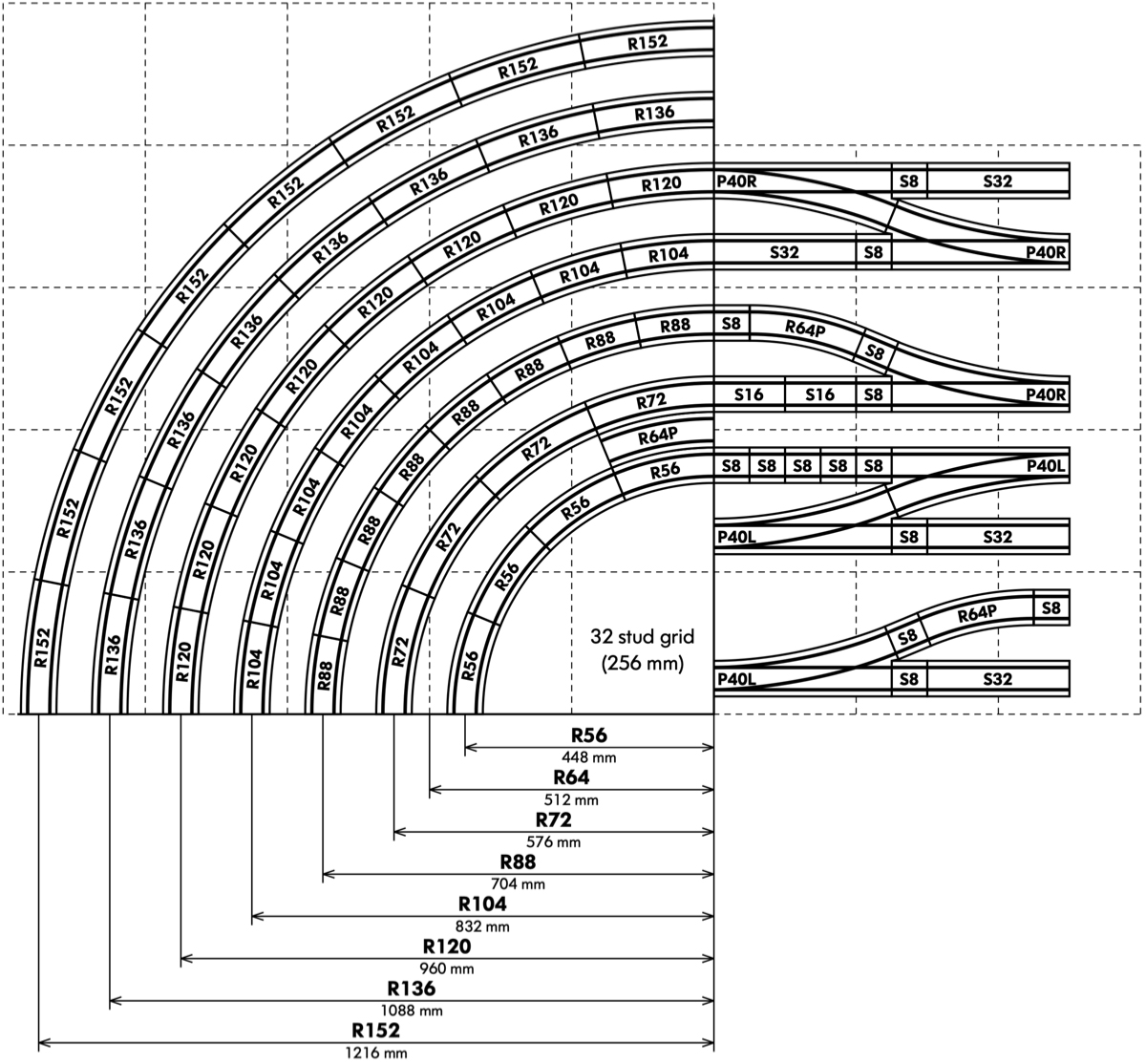
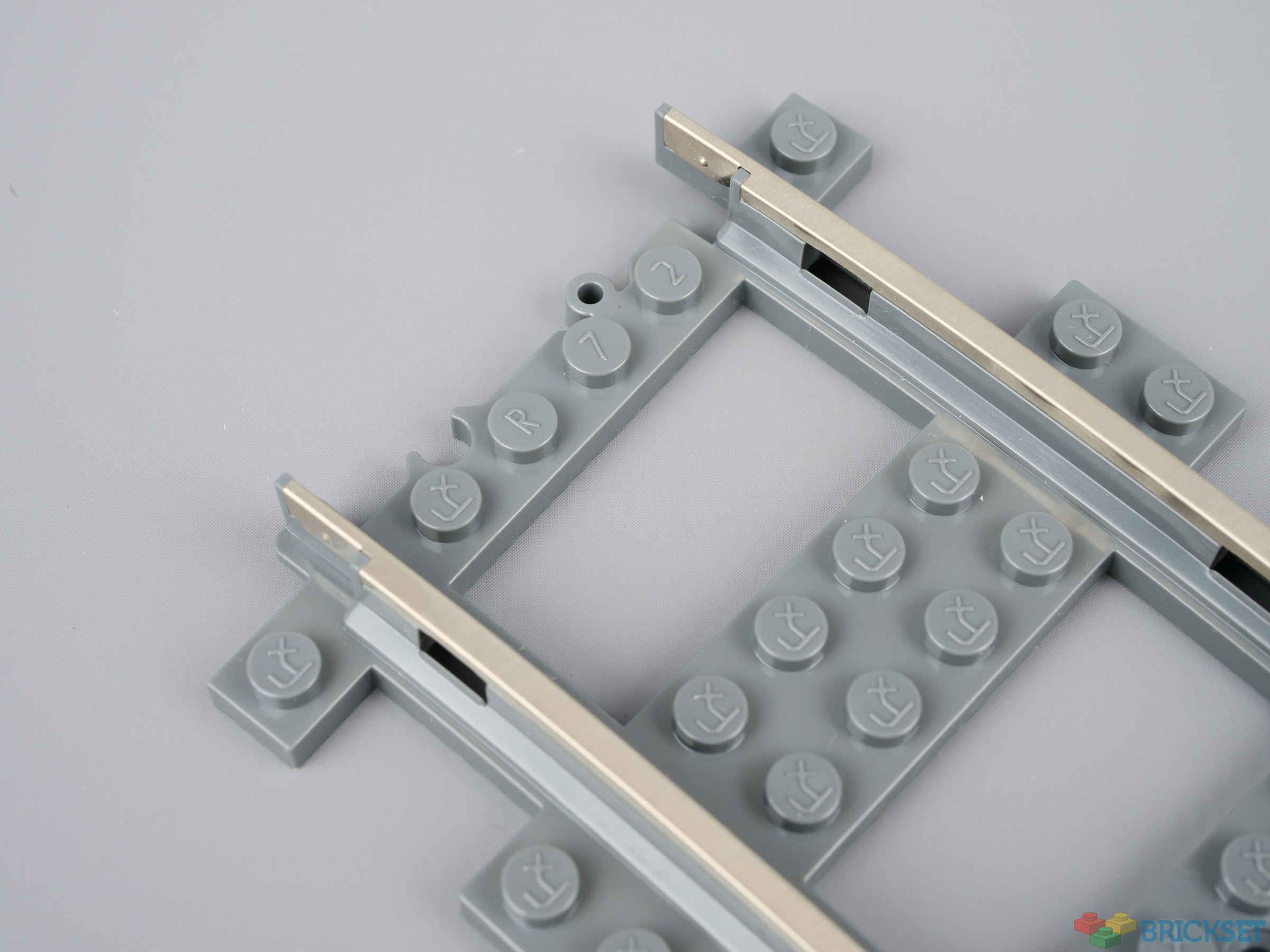
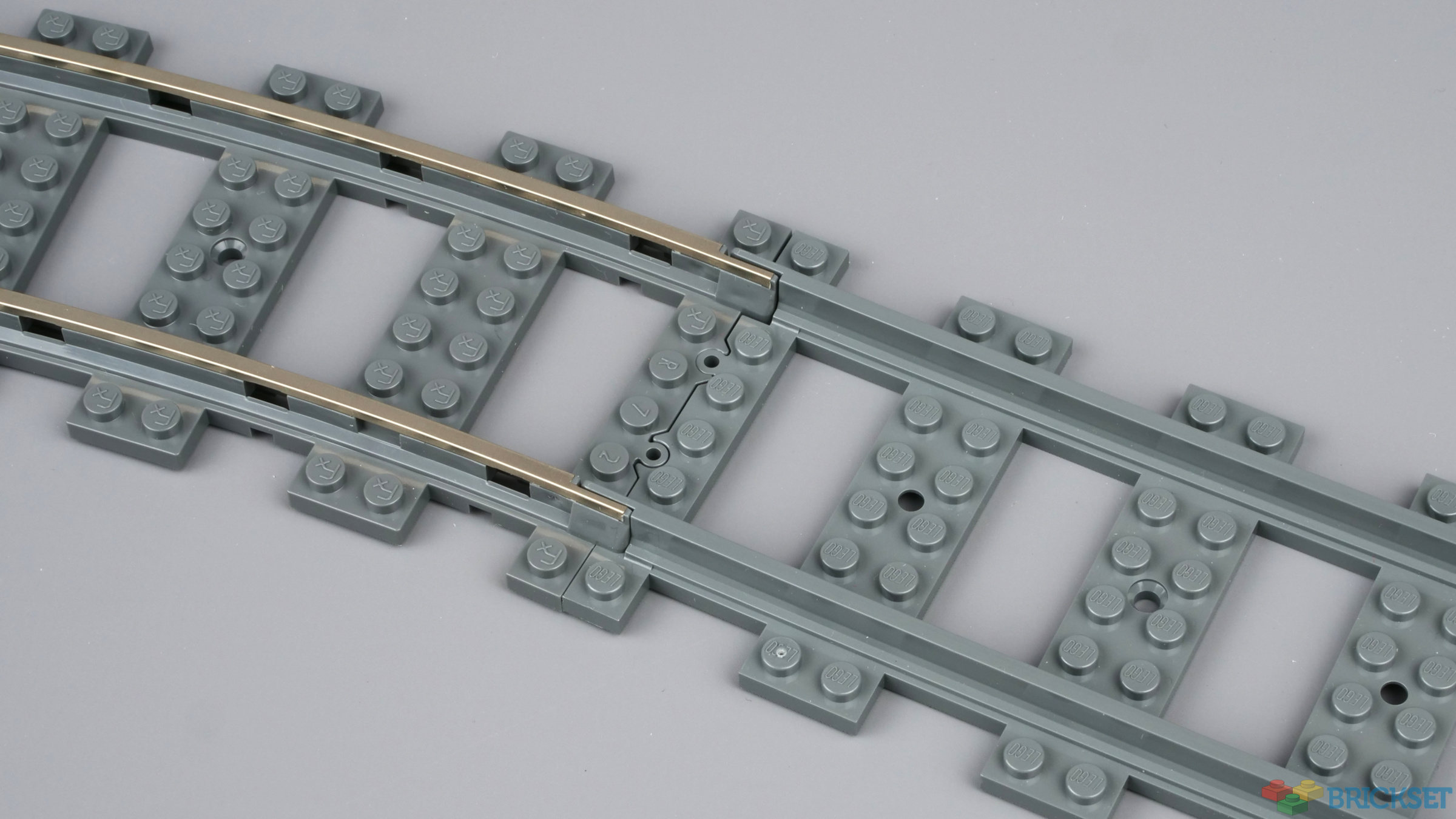
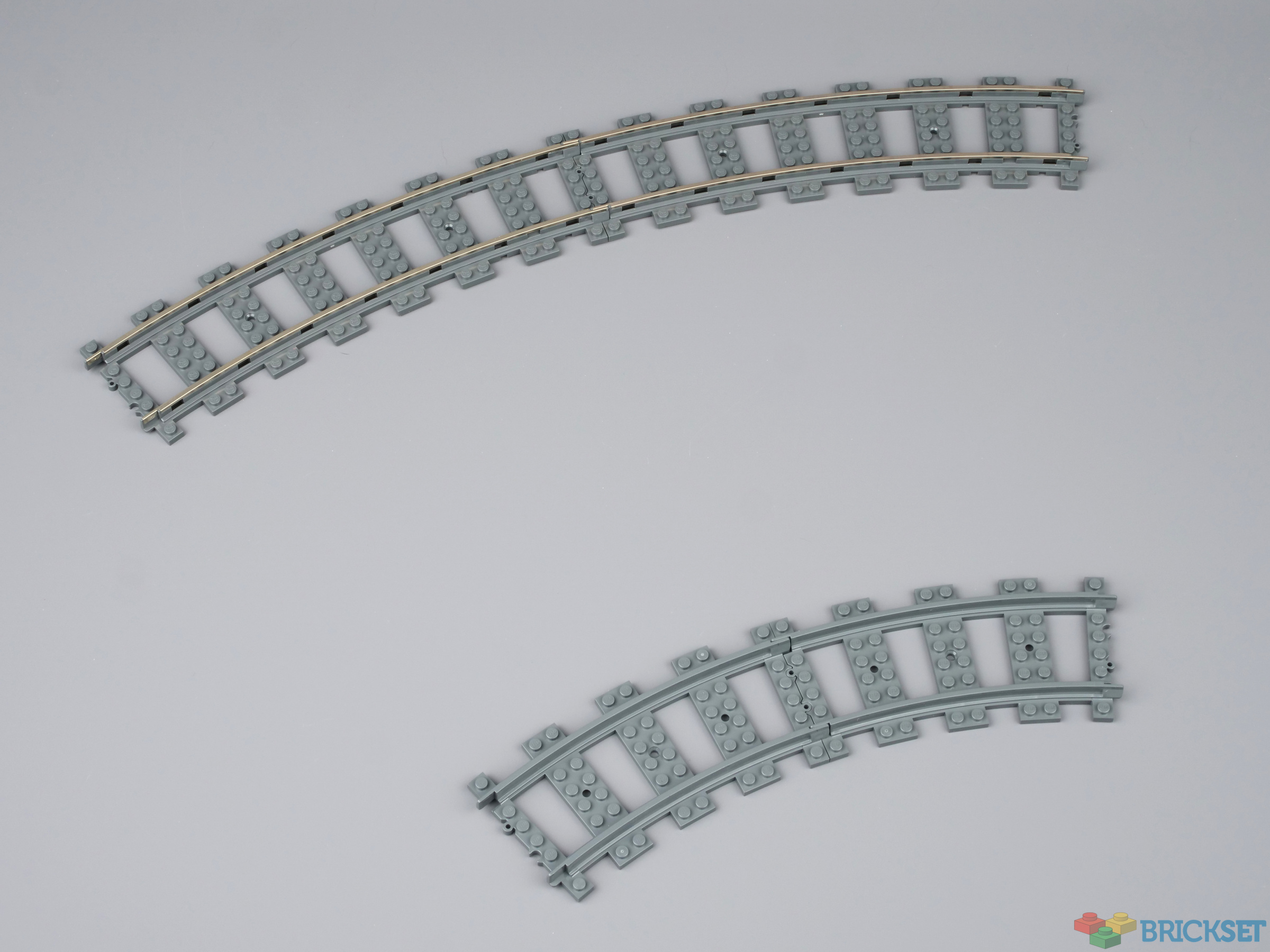
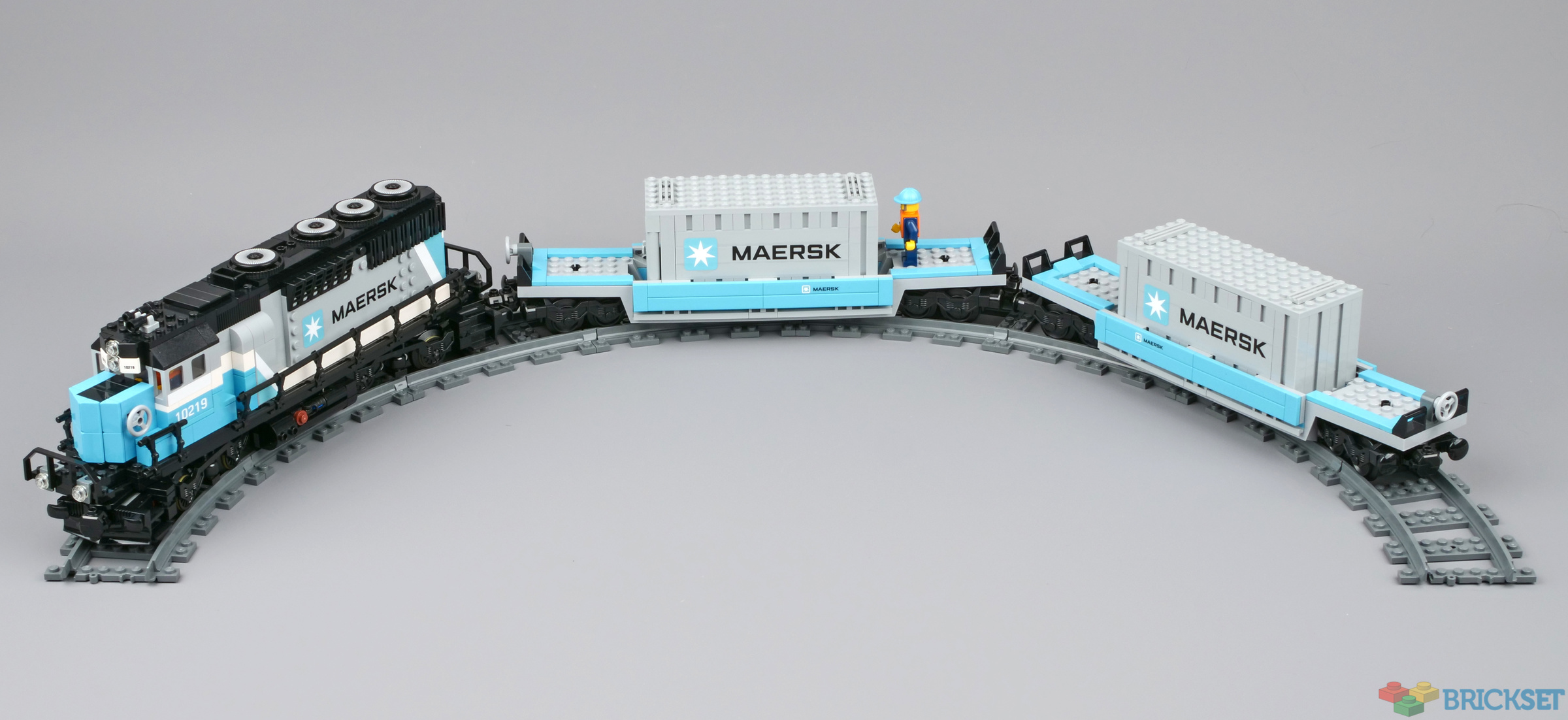
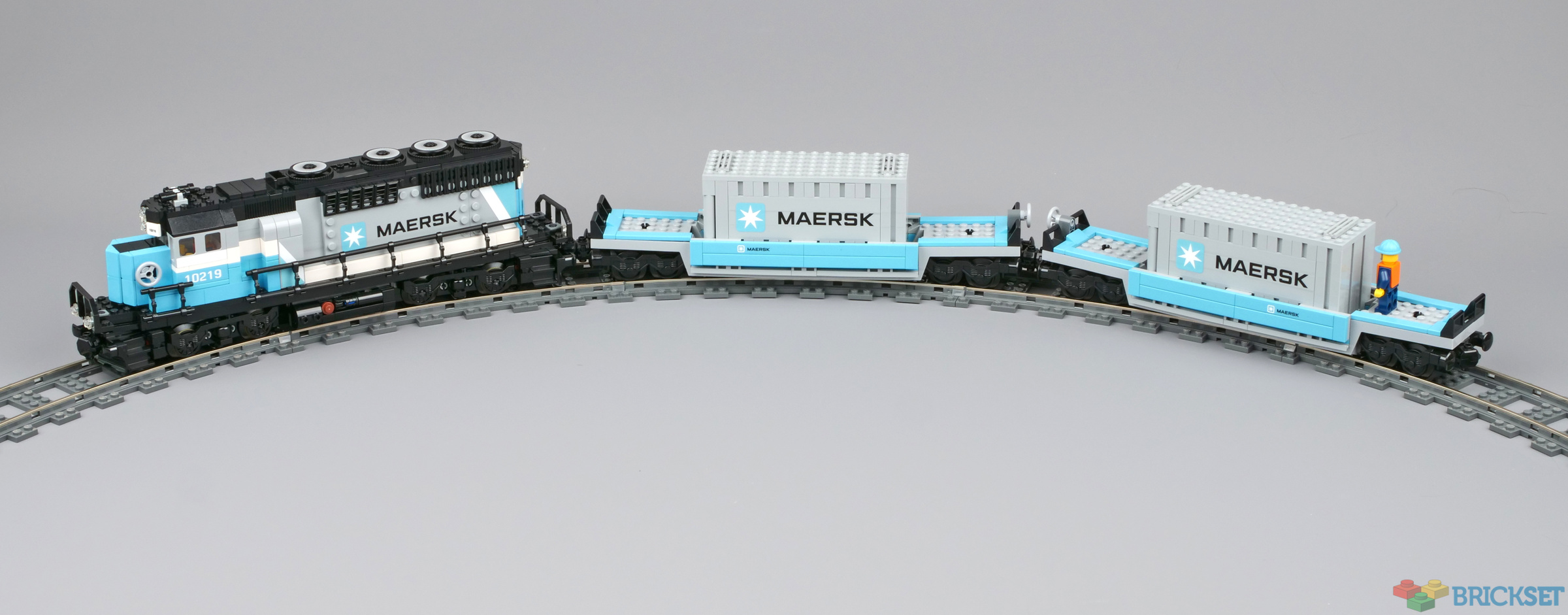


72 comments on this article
I have been waiting for such a product line for years.
It's certainly not cheap, but as it appears to be of excellent quality, I am sure it is worth every penny.
As for different radii, several alternative manufacturers produce LEGO-compatible plastic tracks. But not for the 9V system.
Thanks for reviewing these Huw. Great to see the pictures with the trains. :-) Looks to be a very high quality product.
Great, I won't be having a large permanent layout, but I have been looking out for these!
curious as to how the company can get around the patents... are they past their lifespan like many other designs, or would the company have approval from Lego?
@LegoDad_itsforme_ said:
"curious as to how the company can get around the patents... are they past their lifespan like many other designs, or would the company have approval from Lego? "
I believe extensive due diligence was undertaken before production commenced.
Now to just figure out how to put one of the spare 9V motors I have into my 10277
Does anyone produce new compatible 9V motors?
@CaptainRed said:
"Does anyone produce new compatible 9V motors?"
Not yet, but that's one of the parts that Fx are planning to produce in future.
Gotta say I'd really like to see some testing with various trains, combining it with old 9V track etc for a proper review.
^ I am not currently building layouts so I am going to pass the track on to someone who is, so expect a follow-up article in due course.
I pretty much missed the 9V area, and the only 9V locomotive is 10133 BNSF. Since I have only a few pieces of 9V track and no motors I've run it in tandem with 10219 Maersk if I want it powered. So all that said, it would be cool if Fx Bricks really does produce and sell 9V train motors to go with the track, and I would be definitely be interested in that as buying used LEGO 9V motors and track isn't worth it for me.
I'm not surprised the larger radius track sold out quickly as I can definitely see the appeal even if you don't run 9V.
Thank you for the review, I like the different radii track as this would be useful in shows and perfect connection with existing electrified or grey track. Hopefully as your article mentions they are looking to produce the 9V electric motor 70358, last seen for $25 in set 10153, so more people including myself can experience these tracks, as at the moment there are only around 100 secondary motors listed on bricklink in the world for around $50 used, with only 5 in the UK. I note they also produce points and cross-overs, which would also need there own servo motors plus software to control everything. I can see all this motorisation and interface been expensive for a small manufacturer compared to the economies of scale possible with the TLG.
Funny how people refer to rail-powered 9v track "old", when only very recently I've become aware of its existence (3 decade-old dark age does that to you). My favorite is 12v but they're 1) expensive, 2) finicky and 3) cumbersome to dis/assemble.
Happy to see that someone is continuing the support for 9v, as said it' a great alternative to the hugely expensive tracks on BrickLink.
@ambr said:
" I note they also produce points and cross-overs, which would also need there own servo motors plus software to control everything."
I don't believe their points are going to be motorized.
As to software, they have a good amount of experience from producing various controller bricks for years. That and as an 'enthusiast' kit their software doesn't have to be anywhere near as kid / idiot proof as Lego's.
Never got into trains much but certainly respect the builders who do.
I like how @Huw has humblebragged with not only the Maersk Train but Emerald Night as well. Man, they are both things of beauty.
But, where are the goats?
@The_Brickster_ said:
"Great! No more paying ridiculous prices per 9V track piece on Bricklink!"
Well, the price isn't that far off. Seeing that this is will not be such a mass produced product the price seems justifiable however.
@MrJackson said:
"I like how @Huw has humblebragged with not only the Maersk Train but Emerald Night as well. Man, they are both things of beauty.
But, where are the goats?"
Well, they're inside the Maersk containers of course. ;-)
I only do layouts in public with my LUG, so I don’t personally care about the track that much. It’s the motors and the power hookups that matter to me. I bought four new 9v motors before the retired, and had worn three of them out when we did a show where I couldn’t run my TMNT Shellraiser. We had a switched siding and a dead siding (just a run of straight track with no switches or power leads). It sits on a single 9v motor and weighs just enough to get great traction, so I purposefully put it on the non-powered siding just to show it off. Someone moved it to the switched siding to make room for a different train, and when another member of my LUG threw the switch to drive a train into the siding, the Shellraiser vaulted off the end of the table and landed on a concrete floor. Besides blowing out the end of a 1x2 brick, it killed my last 9v motor, and I ended up dropping $150 to pick up two more new motors. Now they’re running $100 each, and aid rather just buy a quality 3rd party motor if it’s equivalent to the LEGO version.
I also only have two regulators, and often wish I’d bought more for other stuff, since I can also run PF motors on them.
Bloody hell it's expensive
Once they have complete set of tracks, including crossover, double slip and DCC motor it will be hard to resist. Price is not THAT bad and quality seems to be excellent.
I will be getting these. They eliminate the need for batteries in bulky boxes. This saves money in the long run because you don't have to keep buying batteries (even rechargeable batteries wear out eventually). Additionally, the system removes the need to incorporate the battery box, which allows for far more locomotive design possibilities (like a flat yard slug).
@benredstar said:
"Bloody hell it's expensive"
Seen the prices of Lego 9v components lately, particularly motors? Bloody expensive especially since you need to buy across multiple sellers etc
So... finally a company that planned to produce 9V tracks and ACTUALLY produced some.... I am impressed. Many people tried to kickstart similar products, backed out at the last moment, never to be heard of again. IF Fx knows how to fix a steady margin at a reasonable price point for the enthousiasts, they can become quite succesful. That remains a pretty big "if" though. I wish them all the luck and once again, I'm imprerssed to see some actual produced track instead of plans/prototypes.
I really appreciate the information on the Lego 'Aftermarket', there are a lot of great products being made by enthusiast to a very high quality.
I approve of Brickset telling us more about them. More articles like this!
@CCC said:
"I can see why people want the 9V rails to reduce the need for battery changes. However, large radius curves are possible if you are using PF trains. Just use a straight piece and a flexible joint and you can create any large radius curve you want."
Yes but it looks a bit rubbish and doesn't work well if you want two running lines.
A lot of people already turn plastic rails into 9V with metal tape, I'm not sure about durability but it's pretty cheap and easy to fix. Curves and switches are much more interesting, the original switches are just dumb. I hope the switch mechanism is easy to automate.
But in reality we need motors, or pickup wheels (or whatever the proper name is) for PF motors!
Hopefully if this is a success, they can move on to 12v conductor rails. A good start would be moulding new curved conductor rails so they fit on PF track, and an adapter piece so PF track can be connected to old 12v/4.5v grey track. And new 12v signals! We can dream............
I was planning on using standard plastic track and maybe some TrixBrix track in my future city, but this is REALLY making me want to change my mind. The reason I was opting for standard plastic was due to 9V availability and price.
Can they do Monorail tracks next? The ask for a simple straight monorail track on the used market is ridiculous.
" In fact everything needed to run 9v trains that LEGO no longer produces."
Are they planning on making a cross track like 4519? If so, I definitely need to pick that up.
Are we reviewing third-party products on Brickset now? I think it's a great idea, personally. The site's name is Brickset, not Legoset. When can we get some Bluebrixx reviews?
@biffuz :
I haven’t been paying rapt attention, so I don’t know if it’s this one or someone else, but I remember reading about a motor system that was designed to be interchangeable. The motor had no wheels, so you could pick which style you used for diesel or steam. You could hook it up to battery power to run on RC track, but there was also going to be a stand-alone pickup bogey of some sort, so you could use that as your power source. For medium to large trains, that would work fine, but I don’t know if I could make that work with the Shellraiser, which has a lot of interior cross racing to keep the sides from collapsing (both sides consist of plate-built graffiti), and can’t really accommodate a second bogey.
@ra226:
Someone already did start selling monorail track. Originally, I believe they produced it in black, white, or some shade of light grey, but last I checked I think they were only selling it in grey.
I’m excited at the prospect of them producing motors. I have a solitary motor that I bought just as I was getting out of my dark ages. Finding more track has been difficult at best, but I really wanted to get at least one more motor.
For larger curve radii, there's already TrixBrix who do a full range, including longer switches, in plastic rails. But I can see that track power is useful for display layouts, especially with the future support of DCC.
Though of course the one thing you can't do with track power is a balloon loop
Brilliant idea. Finally an answer to our needs. It was difficult managing several different systems simultaneously and managing a WAREHOUSE of batteries. Plus way too frequent transitions from RC to PF to PU were just a headache. I have almost all of 9V trains, and have also converted 10233 and 10219 to 9V.
All PF and PU trains in my collection are awaiting a compatible motor from those guys at Fx Bricks.
Of course, the tracks are excellent and I will be replacing all of my plastic ones with this product.
@CopperTablet said:
"Are we reviewing third-party products on Brickset now? I think it's a great idea, personally. The site's name is Brickset, not Legoset. When can we get some Bluebrixx reviews?"
Only those which complement LEGO products, and are of interest to AFOLs. We won't be reviewing or even mentioning clone knock-off brands ever. Sorry!
@LegoDad_itsforme_ said:
"curious as to how the company can get around the patents... are they past their lifespan like many other designs, or would the company have approval from Lego? "
Like Huw had said, some extensive background work was probably done. Reading the bio on the founders of the company, one being the founder of l-gauge.org, the other the creator of the LEGO Ideas Maze set (21305), it was probably a very brief conversation.
@PurpleDave Last I checked (and it was a year or so ago), there was only one and they were poor, obviously 3d-printed quality. I would love it if Lego would bring back the monorail standard.
I'm curious why the review doesn't mention the price. I had to click through to the site and then click a few more times before I found the price. It's an important piece of information that I usually see in reviews for computers, cars, Lego sets, and even books on UCS Lego sets.
@PDelahanty said:
"I'm curious why the review doesn't mention the price. I had to click through to the site and then click a few more times before I found the price. It's an important piece of information that I usually see in reviews for computers, cars, Lego sets, and even books on UCS Lego sets."
It’s mentioned at the end of the article, plain as day:
“ It's available from FX Bricks in North America for $87.95 a box and JB Spielwaren for €59.99 in Europe although initial stocks of the curves have sold out already which I think proves that it is a much needed and in-demand product!”
Bloody hell that USD exchange rate cost is immense—deal killer.
Finally I can buy into 9v and remove the need to waste so many batteries. I missed the 9v erra and have never really liked using batteries with plastic tracks, such an environmental nightmare. I remember having a small electric train set as a kid and can't imagine any other way to run trains. Pulling out a battery pack from a train every x hours is just a pain in the a$.
@Huw said:
" @CopperTablet said:
"Are we reviewing third-party products on Brickset now? I think it's a great idea, personally. The site's name is Brickset, not Legoset. When can we get some Bluebrixx reviews?"
Only those which complement LEGO products, and are of interest to AFOLs. Sorry!"
Looking forward to your review of Burg Blaustein, then. It's hard to think of a better complement to 21325.
Given the direction of being more sustainable and environmentally friendly, I am surprised Lego has not moved back to powered train track and used its wireless controller to add a way to control the on/off function for the trains. This would be the best of both worlds and a lot less batteries going to landfill.
@ra226:
It's been over a decade since we did a Moonbase display, so I haven't really looked into it too deeply. Too many other things to spend my money on as it is, without buying up stuff that's not even going to be used.
@waterytowers:
I read once that there's a law in the EU (or maybe just Germany) that bans the use of wall power in a kid's toy. I've also read that the machine that crimped the metal layer on the track broke down. Back when the machine that used to glue glass into vintage window frames finally died, they just stopped producing that style of window permanently, and converted everything to snap-in windows, so I could see the latter being a legitimate story. But the EU also uses 240v power, which is more efficient than 120v, but also more deadly, so the former rings plausible as well.
@Huw said:
" @CopperTablet said:
"Are we reviewing third-party products on Brickset now? I think it's a great idea, personally. The site's name is Brickset, not Legoset. When can we get some Bluebrixx reviews?"
Only those which complement LEGO products, and are of interest to AFOLs. We won't be reviewing or even mentioning clone knock-off brands ever. Sorry!"
No need to apologize!
@fakespacesquid:
Maybe he was saying that the clone knock-off brands are sorry attempts to cash in on the success of the LEGO brand?
@PurpleDave said:
[[
@waterytowers :
I read once that there's a law in the EU (or maybe just Germany) that bans the use of wall power in a kid's toy.
]]
Interesting. How would any model railroad set ever be sold? Are they marked as adult only, or must be over 18?
I see powered trains as a teenager and adult pursuit more than for young kids. Young kids can be sold non powered sets which is what my son preferred when he was young. I suppose then Lego would need multiple track types, plastic for the young kids and powered tracks for older kids.
I just figure that since lego is investing in better environmental plastic that it would also try to reduce e-waste rather than add to it. Unless they also have invested in more recyclable batteries?]]
@Huw said:
" @CopperTablet said:
"Are we reviewing third-party products on Brickset now? I think it's a great idea, personally. The site's name is Brickset, not Legoset. When can we get some Bluebrixx reviews?"
Only those which complement LEGO products, and are of interest to AFOLs. We won't be reviewing or even mentioning clone knock-off brands ever. Sorry!"
Glad to hear it. Things like this, that offer something Lego doesn't/can't is fine, same with off-brand accessories like display plates and such. As a purist, I have absolutely no interest in subpar knock-off brands or bricks.
@waterytowers:
Dunno. I live in the US, where the only use of 240v that's permitted in residential zoning is for major electrical appliances like stoves, hot water heaters, or dryers (their gas-powered equivalents can usually be plugged into 120v outlets, assuming they even need electrical power).
But the other thing you're not considering is that the green movement has fully embraced batteries. They pretty much have to, since you can't very well tell everyone that they have to switch to fully electric vehicles to save the planet if you're simultaneously demonizing batteries for the pollution that one-time batteries create when they're thrown in the trash, or the environmental destruction that rechargeable batteries cause in the harvesting of vital rare earth metals.
And the ironic thing is that no hobby train, LEGO or otherwise, actually runs on 120v or 240v power. LEGO trains run on 9v power, whether it's batteries or a regulator. The only thing that runs on 120v or 240v power is the transformer you plug into the wall. Once it reaches the wire that comes out of the transformer, it's not going to give you more than a mild shock. But, for a brief moment as the transformer is either being plugged into the wall, or unplugged from it, there may be electrical contact while there's still enough room for a very small finger to squeeze between the transformer and the outlet and touch the metal bits. Certainly you could slide a metal object like a kitchen knife behind the transformer and get hit with the full voltage being run in that household.
@iriki said:
"Funny how people refer to rail-powered 9v track "old", when only very recently I've become aware of its existence (3 decade-old dark age does that to you). My favorite is 12v but they're 1) expensive, 2) finicky and 3) cumbersome to dis/assemble."
Interesting train :) of thought. The way you describe your favourite it almost seems your least favourite
Someday I really want to motorize 10173 Holiday train. Noooo idea what I need to do this, but guessing these tracks and some new wheels at least and of course the power source. Also want to wire the winter village with tiny lights. Currently I just have lots of twisted together strands of mini lights running on batteries.
@PurpleDave said:
"And the ironic thing is that no hobby train, LEGO or otherwise, actually runs on 120v or 240v power. LEGO trains run on 9v power, whether it's batteries or a regulator. The only thing that runs on 120v or 240v power is the transformer you plug into the wall. Once it reaches the wire that comes out of the transformer, it's not going to give you more than a mild shock. But, for a brief moment as the transformer is either being plugged into the wall, or unplugged from it, there may be electrical contact while there's still enough room for a very small finger to squeeze between the transformer and the outlet and touch the metal bits. Certainly you could slide a metal object like a kitchen knife behind the transformer and get hit with the full voltage being run in that household."
Modern power plugs have an insulated coating where only the tips conduct electricity, so that helps reduce the chance of accidentally making contact.
And to address the possibility that wall power is banned in children's toys, I don't think it's true. It would mean that everything from slot car sets to video game consoles could not be sold to children.
The reason Lego may have switched to 9v from the old 12v system would more likely be to do with changing technology, or what kids would expect in a 'realistic' looking train set, which they'd determine as a result of focus testing in the 80s and 90s (metal rails and the omission of those ugly central power conductors greatly improved the look in my opinion).
@PurpleDave said:
" @waterytowers :
I read once that there's a law in the EU (or maybe just Germany) that bans the use of wall power in a kid's toy. I've also read that the machine that crimped the metal layer on the track broke down. Back when the machine that used to glue glass into vintage window frames finally died, they just stopped producing that style of window permanently, and converted everything to snap-in windows, so I could see the latter being a legitimate story. But the EU also uses 240v power, which is more efficient than 120v, but also more deadly, so the former rings plausible as well."
I have an idea: make a new version of 9V rail system, BUT powered by a USB cable, preferibly a Type-C one - but the USB wall adapter is not included. So we can get a new 9V system that's modern, has modern connections, can have Bluetooth connections to Lego's own Powered Up system, and can get away with German laws of toys including adapters. I mean, nowadays everyone has a power brick inside their home, so that couldn't be really an impossible idea.
For those checking out the North American pricing at The FX Bricks site, it should be noted that “All prices shown in CAD” as indicated at the bottom of the store pages. So it’s not quite as expensive as it initially seems once converted to USD.
Is it possible that FX Bricks is avoiding any legal issues by not producing any track configuration that is identical to what TLG has produced? The FX Brick straight track pieces are all longer or shorter than what LEGO made and all the curved pieces are of a larger radius. The turnouts are different too.
The 9V tracks are now 30+ years old, doesn't this mean the patents are now expired?
@Merlict said:
" @benredstar said:
"Bloody hell it's expensive"
Seen the prices of Lego 9v components lately, particularly motors? Bloody expensive especially since you need to buy across multiple sellers etc"
Well yeah, its because of supply and demand. If LEGO was still making their parts, the price would be lower (though guessing with LEGO inflation it would be about 20-30 USD for 8 LEGO sized straight pieces)
My guess is if LEGO were making such track, at least the straights, they would like be charging around 40-60 USD for 8 of these longer straights, so there is price difference. However, it looks like a quality product and they know their market. Less likely it will be kids and more likely it will be grown up kids.. with lots of money and large layouts that can use these parts. I do like the idea of them making power converters/regulators and motors though (though for those hoping the motors are substantially cheaper than what you find LEGO motors for I would not hold your breath, my guess is they will be pricey.. maybe a bit cheaper than the secondary market, but they are motors after all and they will need to pass safety guidelines for different countries)
@RangerTam:
For that train, I believe all it required originally was a 9v motor and the track setup to run it on. For this system, you'd need to buy the track, a means of powering the track, a train motor, and possibly a pickup bogey if the train motor doesn't come with conductive wheels of its own. One thing to consider, though, is that it doesn't appear this system will match the radius of official LEGO track. Curved LEGO track is pretty cheap on the secondary market just because any train that came with track gave you a minimum of 16 sections of curved, and many didn't come with any straight track at all. As people expanded their layouts, it was always about buying as many straight track sections as they could afford, while the curved track would continue to pile up even after you had enough. Dark-bley track was produced for a very brief time before they switched to RC trains and all-plastic track. For a time, the rarity kept costs down, as people with massive collections of Dark-Grey 9v track didn't want to mix the colors. That seems to no longer be the case, possibly because this is only being produced in Dark-Bley with no apparent plans to produce R40 curves.
@Rare_White_Ape:
That is not the case in the US. I mean, I've seen plugs where the tip is a different color of metal than the rest, so the manufacturer may have spent some extra money having the non-contact portion of the spades coated in sealer that _may_ provide some electrical insulation, but the majority of 120v plugs in the US are still just solid metal. But thanks to some "creative" wiring that a college roommate once did to an extension cord, I can say with certainty that it's possible to survive a hit from 120v. Maybe that's more of a 240v thing?
For video games, most have switched over to cordless controllers, which may make a difference. But my knowledge of this consisted of having read a single comment on an AFOL site several years ago. The commenter sounded certain that Germany, at the very least, was banning plug-in kids' toys. The best I've been able to come up with is directive 2009/48/EC, which specifically excludes transformers from rules applying to kids' toys, but does impose several requirements on the manufacture of electrical kids' toys (regardless of whether they are wall-powered, use batteries, or both). Maybe that commenter reacted to preliminary discussions about this directive, maybe they had read an inaccurate report of the directive (or misunderstood it), maybe there's some other legislation that I wasn't able to find mention of, or maybe The LEGO Company overreacted to the legislation that resulted because they decided to play it safe.
@gabri_ves:
I could support that. In a pinch, it would allow you to run something off power banks or a laptop! However, USB power would need to be stepped up because it's a 5v format. A possible cheat for this would be to run two feeds and combine them to 10v.
@merf71:
Nope. They have an S16 planned, which is what the standard LEGO straight would count as. It's a bit tricky to find it in the diagram, but if you look through the sections of switches on the right, the second from the top is a Y that has two S16 sections on the lower left. Dark-bley straights are particularly expensive because they had such a short production run before 9v track was discontinued. Curves in dark-bley are more expensive than dark-grey, but that's because you can buy New dark-grey curves for way below MSRP (Bricklink has a few sellers trying to unload them for less than $1 per section). If this system takes off, expect the price of dark-bley LEGO curves to creep up as people buy them to fill the gap in this system. Once that happens, maybe they'll consider expanding the format.
@biffuz:
Probably? But there's patents and copyrights, and all new shapes get copyrighted. All modern new shapes have been getting copyright notice formed into the part, no matter how small it has to be to fit. Even the 4L lightsaber blade got a new mold that added incredibly small text to the ends, since that's the only spot that's flat and wouldn't interfere with part functionality.
@madforLEGO:
S32 is clearly designed with adults in mind. For a flat layout, there's nothing they'll allow you to do that can't be accomplished with 2x S16. But they could make for a sturdier trestle bridge, or shallow grade, and they will definitely reduce power loss over a large layout. For ballasted track, they eliminate unnecessary connections in the center of a baseplate. And R152? That takes 25 baseplates just to complete one curve, which is bigger than a lot of kids might have for an entire layout!
@quixotequest:
That's $87.95 CAD, according to the website. US pricing will apparently fluctuate with the USD/CAD exchange rate unless someone in the US works out a distribution deal with them.
@dutchbrickdad:
I don't know a bunch about 12v, but I guess it's a very finicky system compared to 9v, but allows a lot more versatility and functionality.
9V tracks look better, but the 12V system is superior: electric stops, track changes, decoupling and road crossing :)
@PurpleDave said:
" @Rare_White_Ape:
That is not the case in the US. I mean, I've seen plugs where the tip is a different color of metal than the rest, so the manufacturer may have spent some extra money having the non-contact portion of the spades coated in sealer that _may_ provide some electrical insulation, but the majority of 120v plugs in the US are still just solid metal. But thanks to some "creative" wiring that a college roommate once did to an extension cord, I can say with certainty that it's possible to survive a hit from 120v. Maybe that's more of a 240v thing?
For video games, most have switched over to cordless controllers, which may make a difference. But my knowledge of this consisted of having read a single comment on an AFOL site several years ago. The commenter sounded certain that Germany, at the very least, was banning plug-in kids' toys. The best I've been able to come up with is directive 2009/48/EC, which specifically excludes transformers from rules applying to kids' toys, but does impose several requirements on the manufacture of electrical kids' toys (regardless of whether they are wall-powered, use batteries, or both). Maybe that commenter reacted to preliminary discussions about this directive, maybe they had read an inaccurate report of the directive (or misunderstood it), maybe there's some other legislation that I wasn't able to find mention of, or maybe The LEGO Company overreacted to the legislation that resulted because they decided to play it safe.
@gabri_ves:
I could support that. In a pinch, it would allow you to run something off power banks or a laptop! However, USB power would need to be stepped up because it's a 5v format. A possible cheat for this would be to run two feeds and combine them to 10v."
Dang I forgot that the maximum output voltage for USB is 5V. Well, that means the transformer will have two micro USB/ Type C sockets. And since the 9V display is usually set in a place where there are a lot of electric sockets, it won't be a big problem.
Of course it means people will prefer to buy a wall adapter with two USB ports.
I was thinking about the hypotetical design of this converter. Something that resembles the original 9V power regulator, with a big yellow switch, and that would have also Powered Up AND Power Functions sockets! And a switch to select between manual (yellow switch) and Bluetooth (Powered Up app, Powered Up RC, or any videogame console gamepad).
@StereoBricks said:
"As a purist, I have absolutely no interest in subpar knock-off brands or bricks."
Given Lego's recent quality issues, how about superior Lego competitors?
@purpledave :
Yep, I completely missed the S16 straight in the diagram. I should’ve looked closer before posting. There goes that theory.
@PurpleDave said:
" @waterytowers:
But the other thing you're not considering is that the green movement has fully embraced batteries. They pretty much have to, since you can't very well tell everyone that they have to switch to fully electric vehicles to save the planet if you're simultaneously demonizing batteries for the pollution that one-time batteries create when they're thrown in the trash, or the environmental destruction that rechargeable batteries cause in the harvesting of vital rare earth metals.
And the ironic thing is that no hobby train, LEGO or otherwise, actually runs on 120v or 240v power. LEGO trains run on 9v power, whether it's batteries or a regulator. The only thing that runs on 120v or 240v power is the transformer you plug into the wall. ."
Environmental movement to batteries has always been the biggest issue with a lot of green power solutions. Batteries have never been overly green to me. It does replace the coal we use here in Australia that has been our dominant mains power source. I think of a coal power station as a very long life battery that is constantly fed new fuel to make the "battery" last longer. It is all about moving closer to a power source that causes less damage than what we currently use. Don't know how long the big batteries from Tesla will last that are used for storage at a power station but they will need to be replaced at some point in time? Hoping we get better solutions before they need to be replaced.
Either way I can't see how running Lego or hobby trains from lots of small home batteries is ever going to be good for the environment compared to wall power.
The big improvement Lego can make above using mains power is allow the wireless controller like they have to control the train functions. Allow phone apps
and have a dedicated Lego controller. They can still keep batteries as a power source, using a large rechargeable battery to power the track as a solution where mains power is unavailable. Just replace the regulator with a rechargeable battery.
@chris38911 said:
"Hopefully if this is a success, they can move on to 12v conductor rails. A good start would be moulding new curved conductor rails so they fit on PF track, and an adapter piece so PF track can be connected to old 12v/4.5v grey track. And new 12v signals! We can dream............"
my words ... I still dig the oldschool "automation" possibilities of the old 12v system, this was just killed when 9v was introduced, never to be seen again. Since then, my Lego train world is limited to what I have there, and I can't and won't make the switch to 9v or newer.
But I'd buy adapter pieces and 12v conductors fitting new plastic tracks on the instance.
@waterytowers:
All batteries wear out. Some degrade with use, while others lose efficiency with age. The holy grail of battery tech is to develop one that uses materials that are easy to obtain, and _doesn't_ wear out. Currently, rechargeable batteries use what are referred to as "rare earth metals", which for years have been exclusively mined in China.
It bugged me when I first heard that China had 100% of the world's supply of these rare earth metals, especially since I'd also heard that they're incredibly common. Turns out it's just a matter of economics. They're easy to find pretty much all over the world, but China is willing to stripmine their land to obtain them. Nobody else could compete with them and still turn a profit, so everyone else just stopped producing them.
Now they're considered a "strategic resource", so nations that don't want to be beholden to China are looking at restarting production, but they're still left with the choice between destroying the environment, or being insanely expensive.
And the people who are pushing batteries as the ultimate solution only notice that the car doesn't generate pollution. They don't trace everything back to how the batteries are produced, or how they're charged. In the US, California is really pushing for battery-powered vehicles, but their power grid is insufficient for current needs as it is, and their state laws make it nearly impossible to increase local power production. Mostly they just scrape by with surplus power they buy off of neighboring grids, but that only works when those grids are producing a surplus. At times, demand matches or exceeds production, and they have nothing left to sell, leaving California with a huge deficiency.
Meanwhile, California has banned installation of new natural gas hookups, first for restaurants, and then for residential. They've banned the sale of gas-powered vehicles, first for fleets, and then for private citizens. They're pushing the entire state to run exclusively on electricity that they can't possibly produce enough of.
Making matter worse, a lot of people have tried to get away from expensive grid power by installing solar panels, but they found out that solar panels don't power your house during a grid failure. They feed power into the grid to offset what you draw off of it, unless you install an expensive home battery system. Then the solar panels charge the battery, which powers your house even when the grid is down. But again, you're getting back to massive batteries that will eventually wear out and need to be replaced at great expense.
Recycling them seems like a great compromise, but it's so difficult that it's not economical to reclaim the materials vs just buying a fresh supply, unless you ship the batteries to destitute nations where you can pay laborers pennies to do a job that also produces a ton of waste and pollution. A lot of those nations are starting to shut their doors to scrap electronics that need to be recycled.
So again, batteries that are easy and clean to produce and don't wear out are the holy grail, but in order to even attempt to get there, they have to convince people to sign on to what they've got now so they can generate income that they can pump into research. There's just no guarantee they'll ever get there.
Well, looks really impressive, the quality is top notch! But surely I will wait for the whole product range being available before even thinking about pulling the trigger...
@PurpleDave said:
" @fakespacesquid :
Maybe he was saying that the clone knock-off brands are sorry attempts to cash in on the success of the LEGO brand?"
When it comes to LEGO trains, the only sorry thing is the current state of that theme as apart from the Crocodile there is nothing worth mentioning from Billund.
What @CopperTablet meant was the huge range of trains and associated material like railroad related buildings that are on offer from said "clone brand". What he didn't realize is that the majority of their sets are not of interest to Brickset readers as
a) they are modeled mainly on German (as well as some US) prototypes and
b) they are not LEGO after all.
@CopperTablet: if you want in-depth build and review videos of those sets, there are several German YouTube channels that specialize in that. No need for Brickset to cover those products.
@TheHacker said:
" @StereoBricks said:
"As a purist, I have absolutely no interest in subpar knock-off brands or bricks."
Given Lego's recent quality issues, how about superior Lego competitors?"
There aren't any ;)
@quixotequest said:
"Bloody hell that USD exchange rate cost is immense—deal killer."
The cost on their website is in CAD, not USD. So it converts to $70.50 USD and 59 Euros.
Omg I have been waiting 30 years for this!!!!